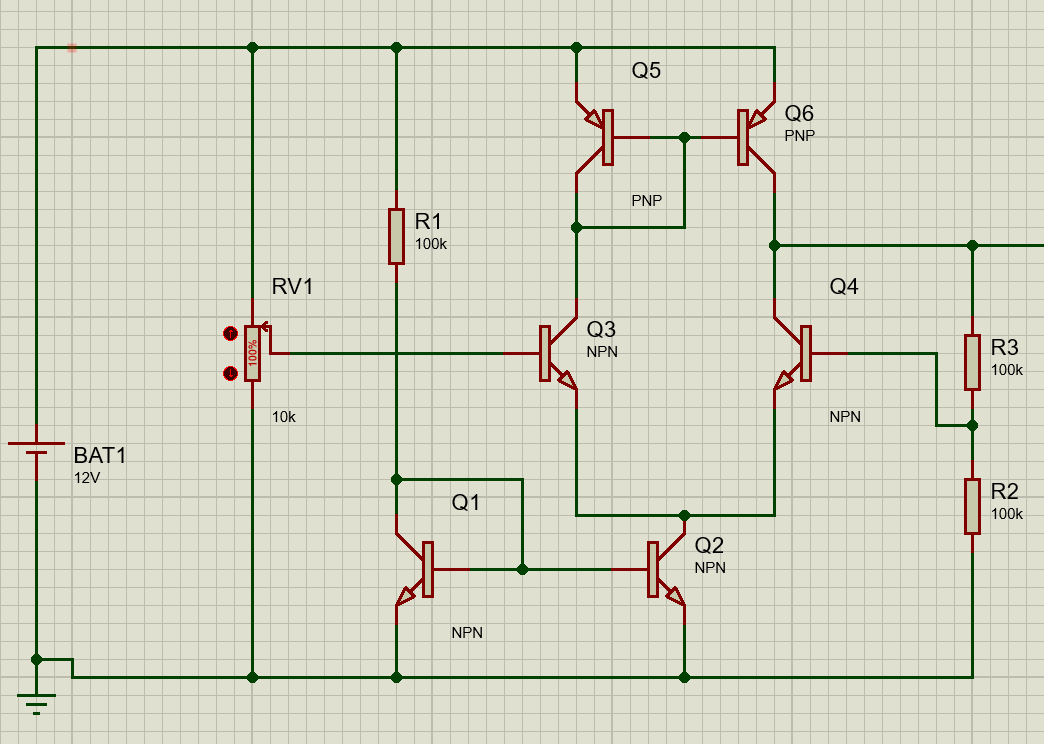According to when we say the collector in a transistor is reverse bias and the base and emitter are forward bias, why in this circuit (since Q3 or Q4 are NPN, so the emitter should be connected to negative voltage) the collector of Q2 is receiving negative voltage? (Since Q2 is NPN, to have a reverse bias the collector should be connected to a positive voltage.)
-
2\$\begingroup\$ I think you are confused about the meanings of potential and potential difference. All potentials in this circuit are positive with respect to ground. But some potentials are lower (less positive) than others. \$\endgroup\$– BartCommented Apr 29, 2022 at 8:05
1 Answer
All potentials other than ground in this circuit are positive with respect to ground. What is important for analysing this circuit are the potential differences. For example, Q3 emitter as said before is not at a negative potential, but it is at a lower potential, thus more negative, than Q3 base. The base-emitter junction is therefore forward biased and conducting. The collector is at an even higher potential, so this transistor is working in active mode. The same logic can be applied to the other transistors in this circuit.
-
\$\begingroup\$ Note that ground is conveniently chosen at the negative terminal of the battery. Were it chosen at the posititive terminal, all potentials would have been negative with respect to ground. Where the ground potential is chosen is not really important, but can significantly simplify the analysis. \$\endgroup\$– BartCommented Apr 29, 2022 at 12:41

